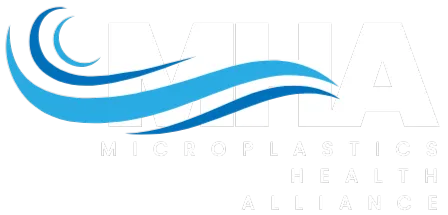REDUCE YOUR EXPOSURE TODAY
Simple Swaps That Make a Big Difference
Replace plastic water bottles with glass
Use stainless steel food containers
Choose natural fiber clothing
Filter your tap water
Get professional microplastics health consultation

The Shocking Truth: Microplastics Are Everywhere
You encounter microplastics hundreds of times daily without realizing it. From your morning coffee to your evening skincare routine, these invisible particles have infiltrated every aspect of modern life.
Here's where they're hiding - and how to protect yourself.
Your Kitchen: The Primary Exposure Zone
Drinking Water
Tap water: 83% of samples worldwide contain microplastics
Bottled water: 90% of brands tested positive (often higher levels than tap)
Ice cubes: Made from contaminated water sources
Action: Install a high-quality filtration system
Food Storage & Preparation
Plastic containers: Release particles when heated or scratched
Plastic wrap: Migrates into food, especially fatty items
Disposable cups: Single-use items shed thousands of particles
Cutting boards: Plastic boards create microplastic shavings
Action: Switch to glass, stainless steel, or wood alternatives
Processed Foods
Canned goods: Plastic linings contaminate contents
Packaged snacks: Plastic packaging transfers particles
Frozen meals: Plastic containers leach during heating
Tea bags: Plastic tea bags release 11.6 billion particles per cup
Action: Choose fresh, unpackaged foods when possible
Your Bathroom: Daily Exposure Hotspot
Personal Care Products
Toothpaste: Microbeads still found in some brands
Face scrubs: Plastic exfoliating particles
Liquid soaps: Microplastic thickeners
Makeup: Glitter and plastic pigments
Action: Read labels, choose natural alternatives
Clothing & Laundry
Synthetic fabrics: Polyester, nylon, acrylic shed millions of fibers
Washing machines: Release 700,000 fibers per load
Dryer lint: Contains microplastic particles
Action: Choose natural fibers (cotton, wool, linen)
Your Living Environment
Indoor Air
Carpet fibers: Synthetic carpets release particles
Furniture: Plastic foam and fabrics shed continuously
Electronics: Plastic components degrade over time
Action: Improve ventilation, use air purifiers
Outdoor Sources
Tire wear: Roads covered in microplastic particles
Synthetic turf: Athletic fields release particles
Plastic mulch: Gardening materials break down
Action: Limit exposure, clean shoes before entering home
The Most Dangerous Sources
Highest Risk Exposures:
Heating plastic containers (1,000x increase in particle release)
Plastic tea bags (releasing billions of particles)
Synthetic clothing washing (continuous fiber shedding)
Single-use plastic bottles (especially when heated)
Plastic food packaging (fatty foods absorb more particles)
Hidden Sources You Never Considered
Sea Salt
Every sample tested worldwide contains microplastics
Particles from ocean plastic pollution
Average: 2,000+ particles per kilogram
Honey
Found on every continent
Bees collect particles from environment
Contamination varies by region
Beer
Detected in samples from 12+ countries
Likely from water and atmospheric sources
Levels vary by brewing process
Your Action Plan: Reduce Exposure Today
Immediate Changes (This Week):
Stop using plastic water bottles
Replace plastic food containers with glass
Install a water filter system
Check personal care product labels
Medium-term Changes (This Month):
Transition to natural fiber clothing
Replace plastic kitchen tools
Choose loose-leaf tea over bagged
Improve home air filtration
Long-term Changes (This Year):
Complete kitchen plastic audit
Replace synthetic carpets and furniture
Create microplastic-free zones
Regular health monitoring
Your Daily Exposure Calculator
Average Daily Intake:
Drinking water: 0.1-5.8 particles/liter
Food: 0.1-30 particles/gram
Air: 0.1-1,000 particles/cubic meter
Total weekly: Equivalent to 5 grams (credit card size)
The Accumulation Effect
Microplastics don't just pass through your body - they accumulate. Scientists estimate:
5-10 years to eliminate particles from organs
Higher concentrations in older individuals
Unknown long-term health effects
Professional Guidance Available
Don't navigate this alone. MHA-certified doctors can assess your current exposure levels, create personalized strategies to reduce your risk, monitor your progress over time, and recommend appropriate testing to support your health journey.

Microplastics Health Alliance
Dedicated to educating the public and healthcare professionals about microplastics and their potential health effects.
Contact
(214) 239-3338
405 State Hwy, 121 Bldg A, Suite 150, Lewisville TX 75067
Stay Updated
Get the latest research and health updates
Copyright © 2025 Microplastics Health Alliance, All rights reserved.
